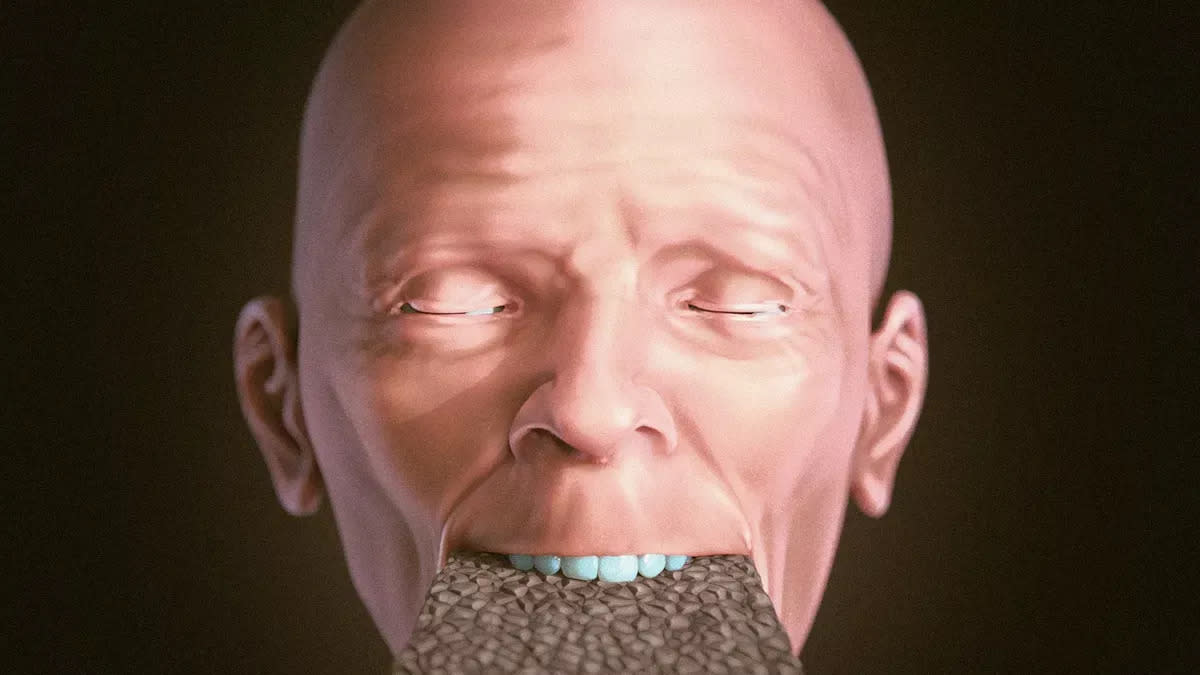A Vampire’s Face Has Reemerged From a Centuries-Old Shroud

"Hearst Magazines and Yahoo may earn commission or revenue on some items through these links."
In 2006, an excavation of a small island in the Venice lagoon uncovered the remains of a 16th century 60-year-old woman buried with a brick in her mouth.
One theory is that this brick was evidence of a postmortem practice meant to deter suspected “vampires” from feasting on the living, while another suggests that the brick’s placement was merely a coincidence.
Now, a forensic expert and 3D designer has recreated the face of the “vampire” to investigate whether a brick could be intentionally placed in the woman’s mouth after death and not damage her teeth in the process.
In May 1897, Irish author Bram Stoker published Dracula, an influential horror novel that—along with other works such as John Polidori’s The Vampyre and Sheridan LeFanu Carmilla—created the dark, brooding, and (in most cases) devilishly handsome blood-sucking villains we know and love today. But these 19th century works don’t represent the origin story of vampires. In reality, they’re just the latest chapter.
The idea of vampire-like creatures—that is, humanoid beings with a disquieting taste for blood—dates back at least 4,000 years to ancient Mesopotamia. And cultures throughout the world have different tales, traditions, and macabre methods for dealing with these supposed horrors from beyond the grave. In 2006, an excavation at Lazzaretto Nuovo (a small island in the Venice lagoon) possibly uncovered one such vampire tradition when a team of archeologists came across a plague pit with one particularly interesting specimen: the remains of a 60-year-old woman with a brick forcibly jammed in her mouth.
Now, with the help of digital modeling, a 3D designer and forensic expert Cícero Moraes has recreated the alleged vampire’s face, bringing to life a small piece of history while also trying to solve a lasting question: could a brick even be placed in a woman’s mouth postmortem without damaging the teeth? Moraes detailed his process in the journal OrtogOnline.
While strange by modern funerary standards, placing a brick in someone’s mouth was more common during the 16th century—particularly if an individual was suspected of being a vampire. This era of human history was plagued by, well, the plague, and the understanding of body decomposition was... less than scientific, to say the least. When gravediggers reopened mass graves, they’d often find bodies with blood seeping from their mouths—evidence (at least to their 16th century sensibilities) that the body was still alive. According to Reuters, shrouds that covered the mouths of the recently deceased decayed due to bacteria, so “vampires” were also known as “shroud-eaters.”
“To kill the vampire you had to remove the shroud from its mouth […] and put something uneatable in there,” University of Florence biologist Matteo Borrini told Reuters back in 2009. “It’s possible that other corpses have been found with bricks in their mouths, but this is the first time the ritual has been recognized.”
To recreate this grisly burial practice, Moraes created measurements and projections to craft frontal and lateral recreations of the face, and molded a scan of a modern individual’s face to the contours of the original skeleton’s digital parameters. The result is something with vibes that are less Bela Lugosi and more kindly next door neighbor (albeit with a brick in her mouth).
However, Moraes’ recreation did confirm that a brick could be placed in the mouth without damaging the teeth. Whether this actually occurred, or if the brick’s placement wasn’t only a coincidence is a question that will likely never be answered.
A mystery befitting the name “vampire.”
You Might Also Like

